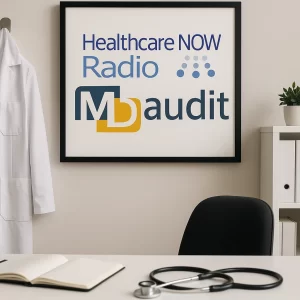In an industry where financial margins are often razor-thin, healthcare providers cannot afford to take a reactive approach to financial risk management. Today’s healthcare revenue stability is constantly threatened by many risks, ranging from billing errors and regulatory non-compliance to fraud and payment denials. Real-time financial risk monitoring offers a powerful solution to protect revenue, maintain compliance, and ensure long-term financial health.
10 Financial Risks Healthcare Organizations Face in 2024:
In 2024, the financial risks impacting healthcare organizations have grown more complex. According to MDaudit data, these ten trending risks are impacting the bottom line of healthcare organizations across the U.S.
- Surgery volumes are coming back strong (~20% growth) in 2024, but so is the scrutiny of claims billed for these services.
- Medicare is driving reimbursement issues – paying less money per claim, increasing time in adjudications, and denying a higher percentage of claims.
- Dollars at risk from external payer audits have doubled (from Q1 2023 to Q1 2024).
- Medicare Advantage plans are under heavy scrutiny by the Office of Inspector General (OIG).
- Telehealth volumes have plateaued, but these billed services remain under scrutiny.
- Payers are investing in AI-driven technology for adjudication and payment integrity capabilities.
- A major clearinghouse cyberattack disrupted claim submissions and payments in Q1 2024, deflating margins for many organizations.
- Average dollars denied per claim continues to increase.
- Average lag days (initial response times) to claim submissions continue to increase.
- Initial denial rates across Hospital Inpatient and Outpatient segments are still greater than 20%.
Traditional methods of managing these risks often involve periodic audits and retrospective analysis. While these approaches can identify issues, they are reactive, addressing problems only after they have occurred. In contrast, real-time financial risk monitoring offers a proactive solution, enabling healthcare organizations to detect and mitigate risks before they impact revenue.
The Power of Real-time Financial Risk Monitoring
Real-time financial risk monitoring involves continuous analysis of financial transactions, billing practices, and compliance adherence as they occur. Gone are the days of weekly and monthly data monitoring. Today’s healthcare revenue challenges require a premiere real-time monitoring solution.
Here’s how real-time financial monitoring can secure healthcare revenue:
- Provides real-time data access
- Sophisticated technology provides risk detection analytics
- Providing alerts that support education and corrective action
At MDaudit, we understand the critical role that real-time financial risk monitoring plays in securing healthcare revenue. Our continuous risk monitoring SaaS platform is designed to empower healthcare billing compliance, revenue integrity, and HIM/coding professionals with the tools they need to stay ahead of risks.
Watch MDaudit’s webinar on Real-Time Monitoring of Healthcare Financial Risks for more information.









